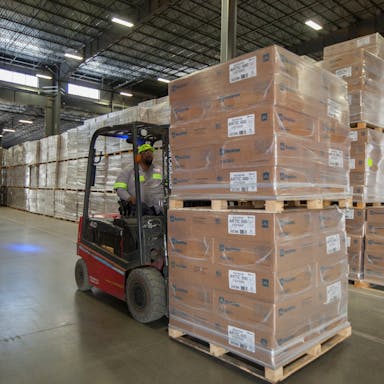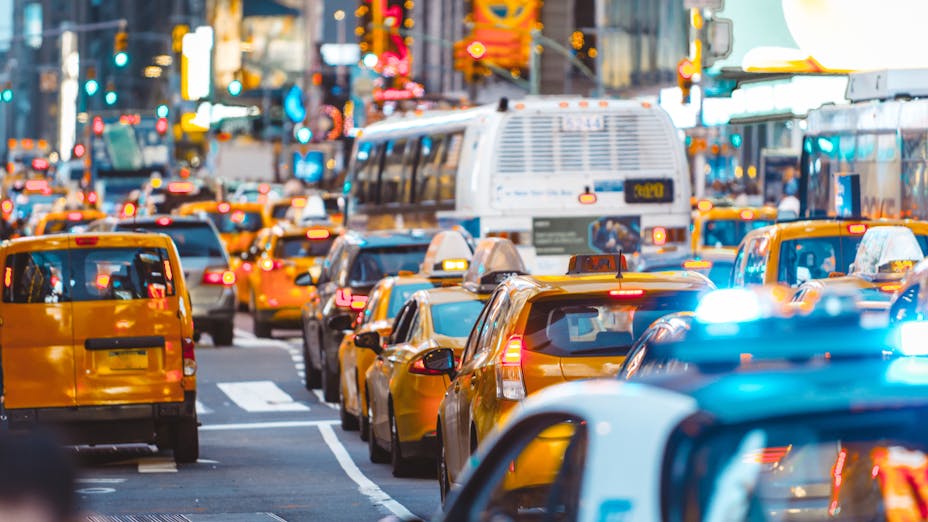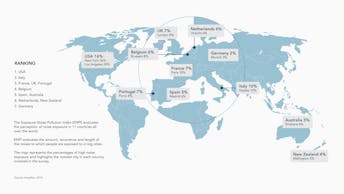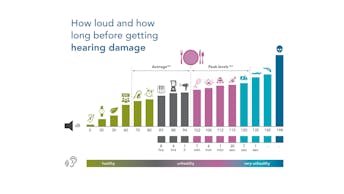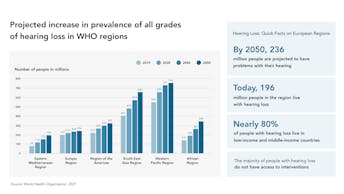Noise pollution is defined as any unwanted or disturbing sound that has an adverse effect on the health and well-being of humans and other living organisms. I am sure, we’ve all experienced the uncomfortable feeling of poor acoustics at home, in the office, at school or in a restaurant enjoying dinner with friends.
Living in Noisy Cities
As the population grows, the number of people living in crowded urban areas will also increase. It is estimated that by 2050, over two-thirds of the population will live in urban areas, which will only increase the amount of noise pollution[1].
Long-term exposure to day-evening-night traffic noise levels of at least 55 decibels affects an estimated 113 million Europeans[2]. Furthermore, 22 million Europeans are subjected to high levels of noise from railways, 4 million to high levels of aircraft noise, and fewer than 1 million to high levels of noise from industries[2].
According to a recent BBC report, parts of the London Underground were "loud enough to damage people's hearing," with noise levels exceeding 105 decibels on many lines[3]. According to the report, some were "so loud that hearing protection would be required if they were workplaces."[3]
Based on a survey among citizens of the EU, by the World Health Organization (WHO), 80% of respondents believed that noise affects their health. Per the World Hearing Index, a person living in the loudest cities has hearing capabilities equal to someone 10-20 years older[4]. Overall, the findings revealed a 64% correlation between hearing loss and noise pollution[4].
For all these reasons, it is important to be aware of the environmental noise impact and take safety measures for a proper sound reduction.
Noise exposure is ’the new secondhand smoke’
How should the global building sector act to contribute to the UN’s goals for sustainable development?
Top questions about acoustics, sound quality and noise
The acoustic of a room depends on what is the purpose of that room, and how it’s being used. We address some of the most frequently asked questions surrounding acoustic design.

